By Rick VanSickle
Hidden Bench Estate Winery is about to offer wine lovers a lot more of their premium organic wines with the purchase of a coveted 48-acre property on the Beamsville Bench.
NOTE, also in this report: Full tasting of new Hidden Bench wines with reviews.
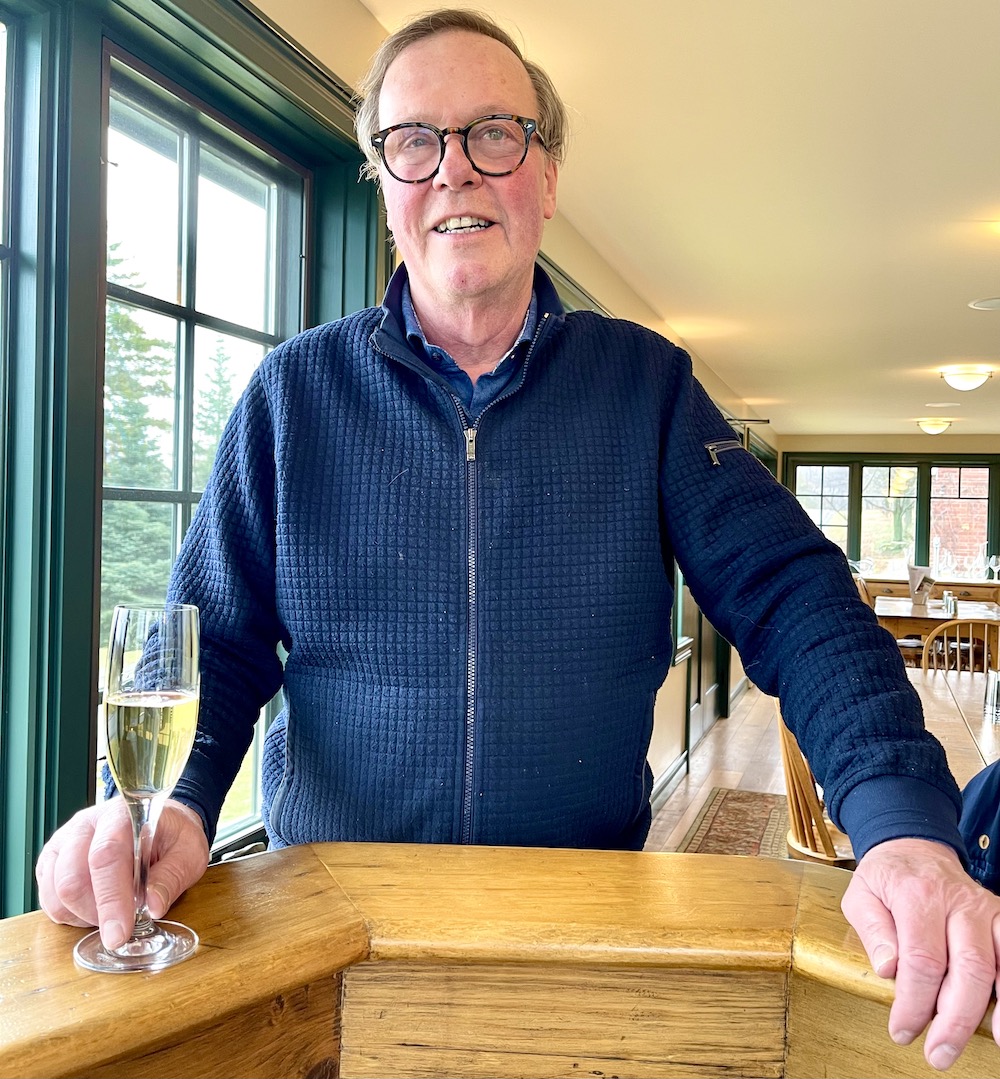
In what is likely one of the largest parcels of land left on the Beamsville Bench suitable for planting grapes, Hidden Bench owner/vigneron Harald Thiel, above, told Wines in Niagara that “as estate winegrowers the HB team and I are very excited to be able to have the opportunity to farm this exceptional piece of Beamsville Bench terroir and to apply our vineyard learnings from the last 20 years of farming and crafting wine from our estate vineyards on the Bench to this new property.”
The property is contiguous to the estate’s main property on the north side of Locust Lane at McLeod Street and borders Lincoln Ave. to the east and Thirty Bench Wine Makers and the Lenko farm to the west and north. The purchase includes an old 1960s, 12,400-square-foot turkey barn (310 feet by 40 feet) with a full foundation, home, and other outbuildings on the east border.
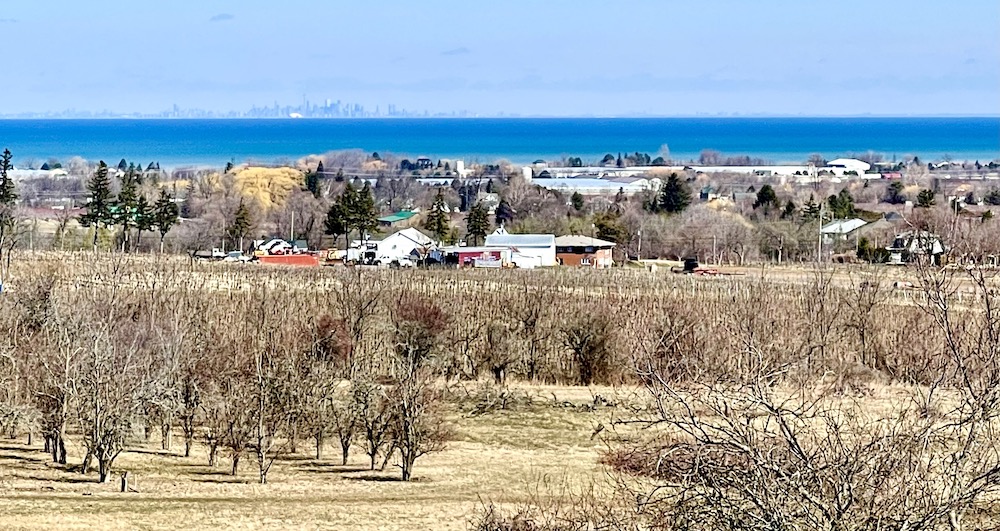
Preparation for the vineyard has already begun, with approximately 25-30 acres devoted to new plantings, bringing the total amount of acreage Hidden Bench owns and farms organically to approximately 110 acres in now four estate vineyards — Locust Lane, Rosomel, Felseck and the new vineyard, plus a vineyard the estate leases and farms organically in the Lincoln Lakeshore sub-appellation.
The property is being tested to determine the soil content and other conditions that will help Hidden Bench in its planting decisions. Thiel says more Chardonnay and Pinot Noir for sparkling and still wine production will be part of the new vineyard along with Cabernet Franc, but the vineyard team is still in the planning stages to determine optimal varietal planting.
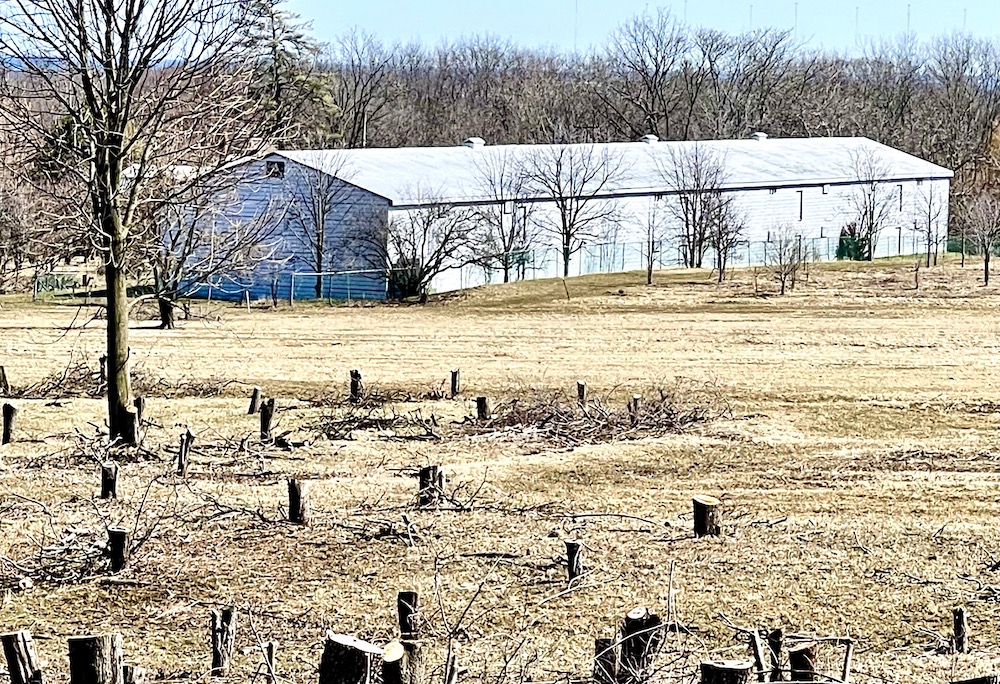
Planting is starting from scratch and will be farmed organically with selected biodynamic inputs as is the rest of the estate. The plan is to plant in 2024 with the first harvest for bottling four-to-five years later.
The property also includes a 14-acre old growth oak and maple forest which will be part of an NEC ecological preserve on the south-west border and a pear orchard on the north and east border.
Thiel says the HB team is in the early stages of planning for the yet-to-be-named vineyard but is “excited to expand the portfolio of vineyard-specific wines Hidden Bench is known for.”
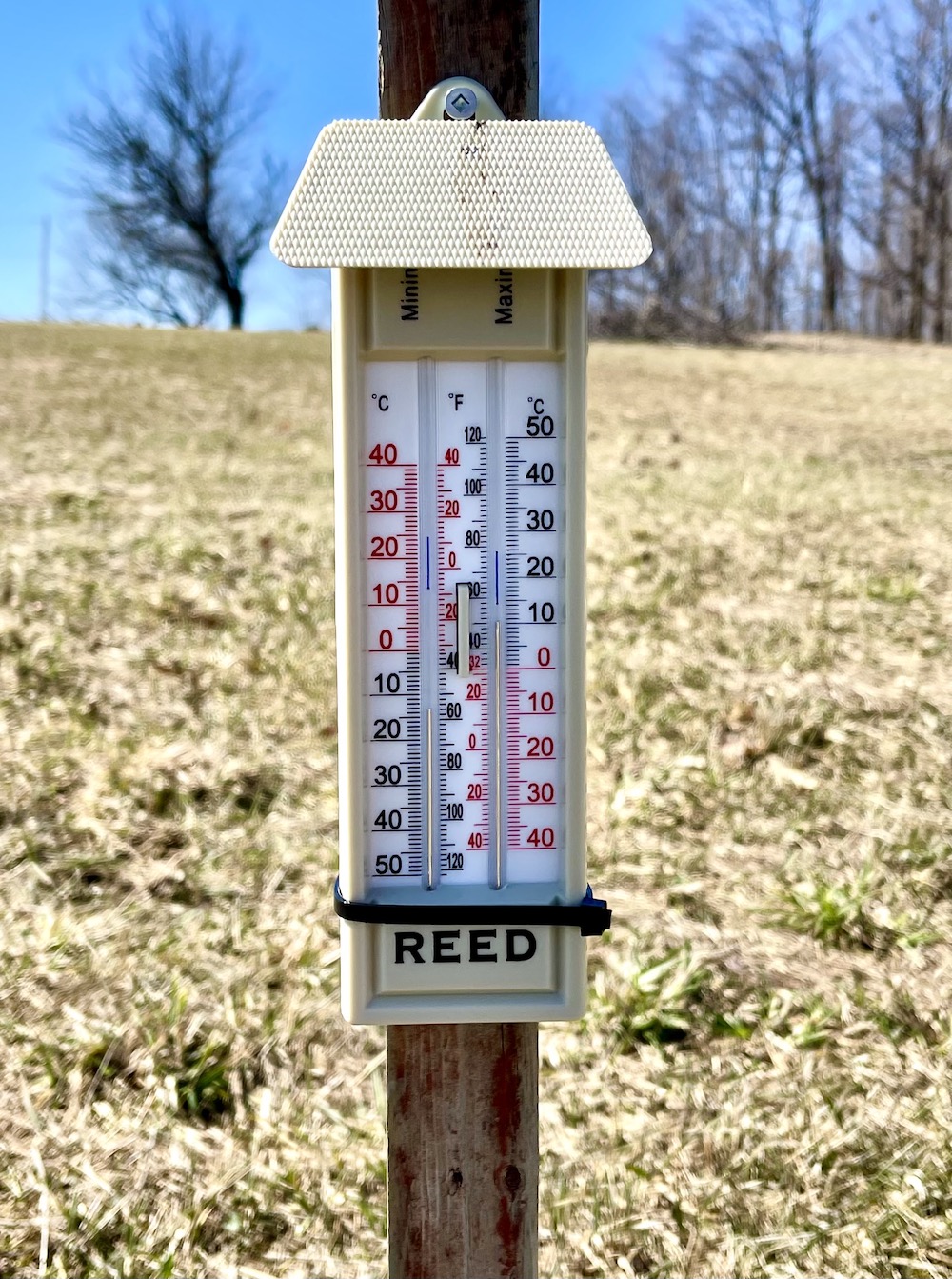
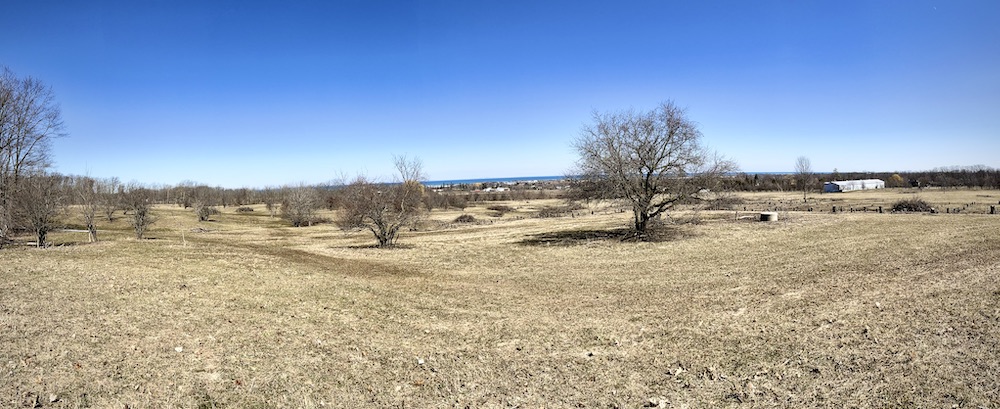
Hidden Bench was founded in 2003 by Thiel and his family. The focus has always been on Pinot Noir, Chardonnay, and Riesling, but the estate goes far beyond that, crafting limited quantities of its white meritage called Nuit Blanche, the red meritage called Terroir Cache (along with top red blend expression made in the best vintages called La Brunante), a traditional method sparkling wines, rosés, and more recently, Gamays from the leased Lincoln Lakeshore vineyard. There is also the small production Rachis & Derma line of wines, which highlights the natural winemaking genre with very minimal sulphur additions, plus the emerging Béton series using the concrete aging tanks that the estate recently purchased.
I have followed the Hidden Bench story nearly since its beginning, and I can tell you that Thiel has proven himself a visionary in organic and sustainable farming as well as cutting edge technology in the winery. His team regularly crafts wines that speak to the terroir of the Beamsville Bench while constantly moving forward with upgrades in the winery and barrel cellar to improve the portfolio.
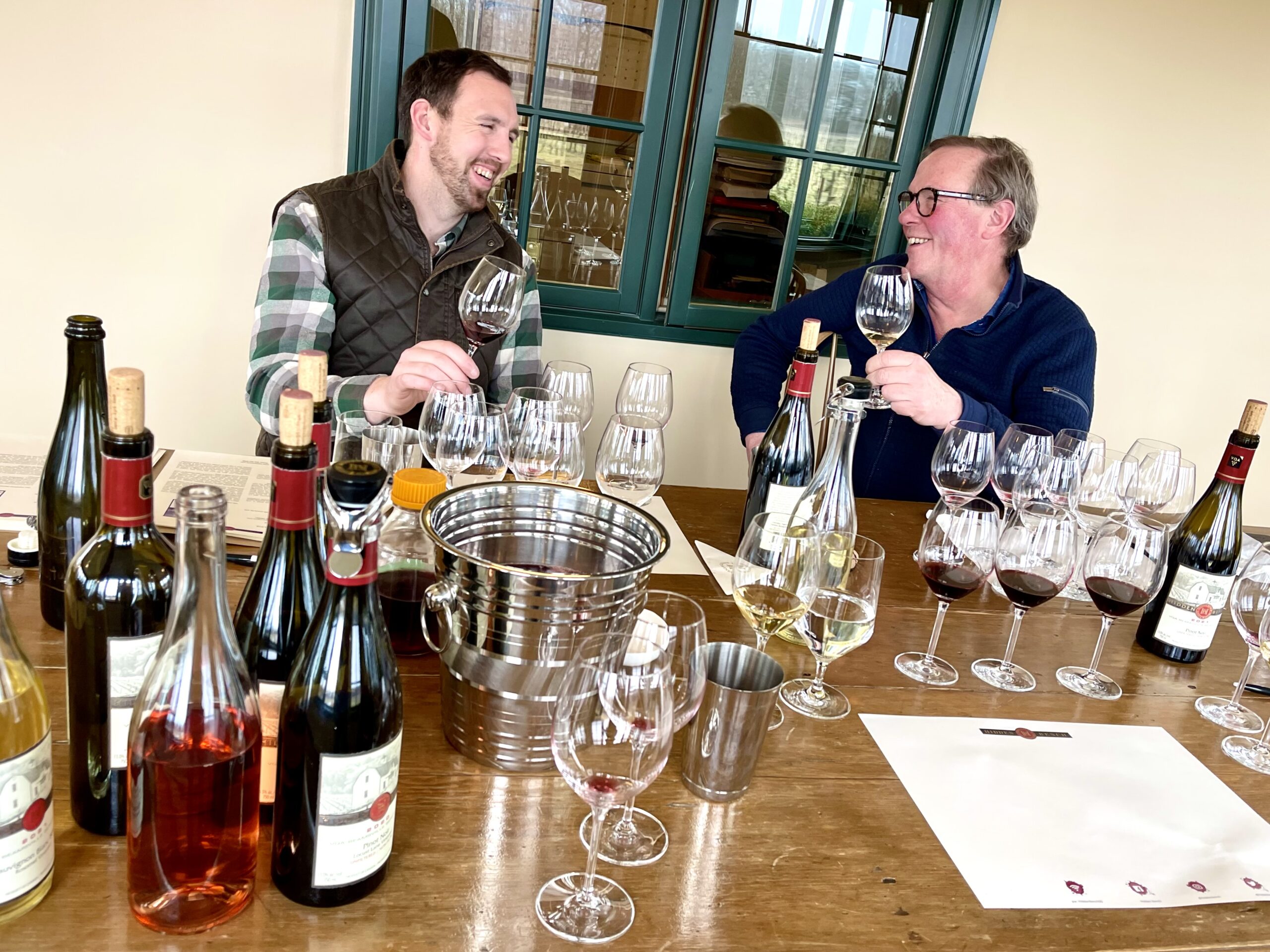
Perhaps most importantly, Hidden Bench is never satisfied with the status quo, always adding new wines to complement the core single-vineyard expressions upon which the winery foundation is built on. His latest little surprises are a passe tout grains (PTG) style red wine that is a fresh and lively red blend made from Pinot Noir and Gamay Noir, and a new Chardonnay under the Béton series label, that I tasted recently.
At a tasting and brisk hike around the new property with Thiel and winemaker Alex Baines recently, Wines in Niagara got a full preview of upcoming wines from Hidden Bench. This is what I liked:
The Bubbly
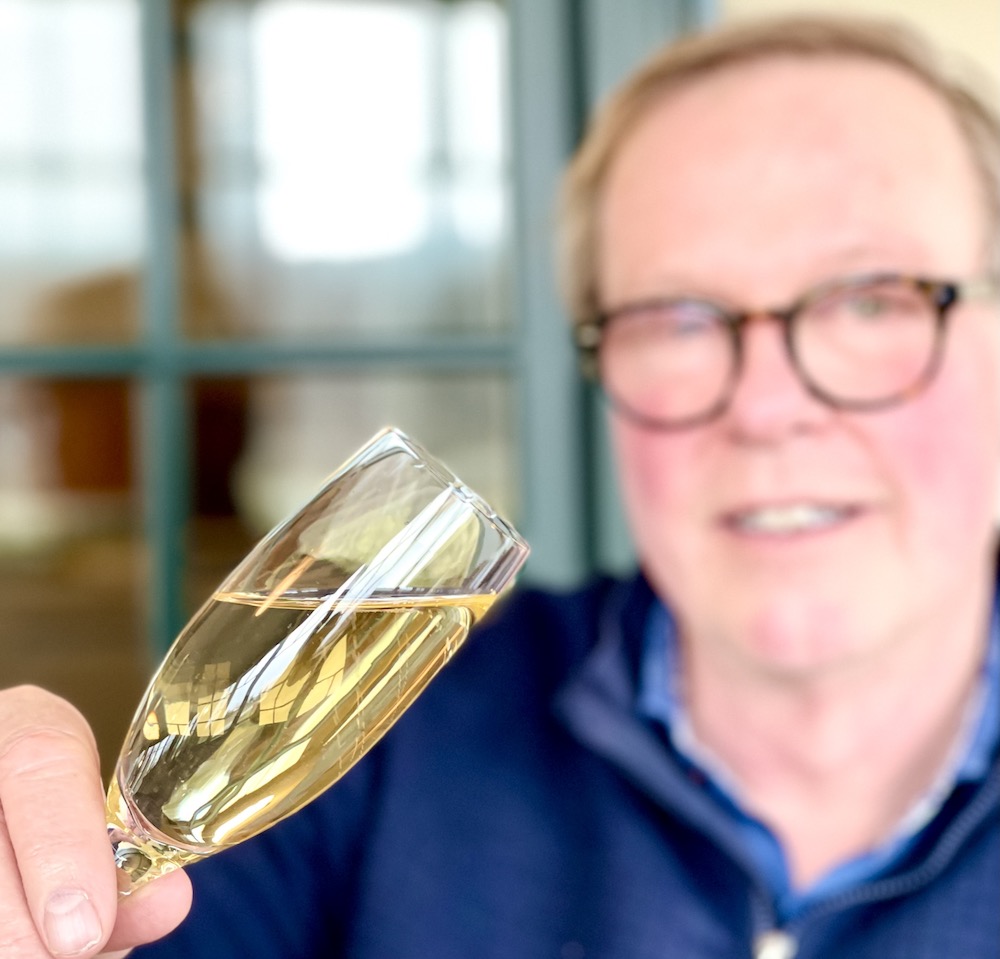
Hidden Bench Brut Natur 2017 ($45, released in May, 93 points) — This “zero dosage” (no sugar added) traditional method sparkling wine spent five years on its lees before being disgorged in January of this year. It’s a blend of 57% Pinot Noir and 43% Chardonnay from estate vineyards and spends seven months in 100% French oak, all neutral barriques. I tasted this from an unlabelled bottle. It pours an elegant, persistent mousse and has a complex nose of toasty/brioche, fresh lemon, grapefruit, pear, white flowers, a touch of flint and toasted almonds with subtle autolytic notes. It has energetic bubbles and verve on the palate with zesty citrus, green apple, lemon curd and pear in a rich and elegant style that combines length and mouth-watering acidity through a lifted finish. A fabulous sparkling wine.
The Rieslings
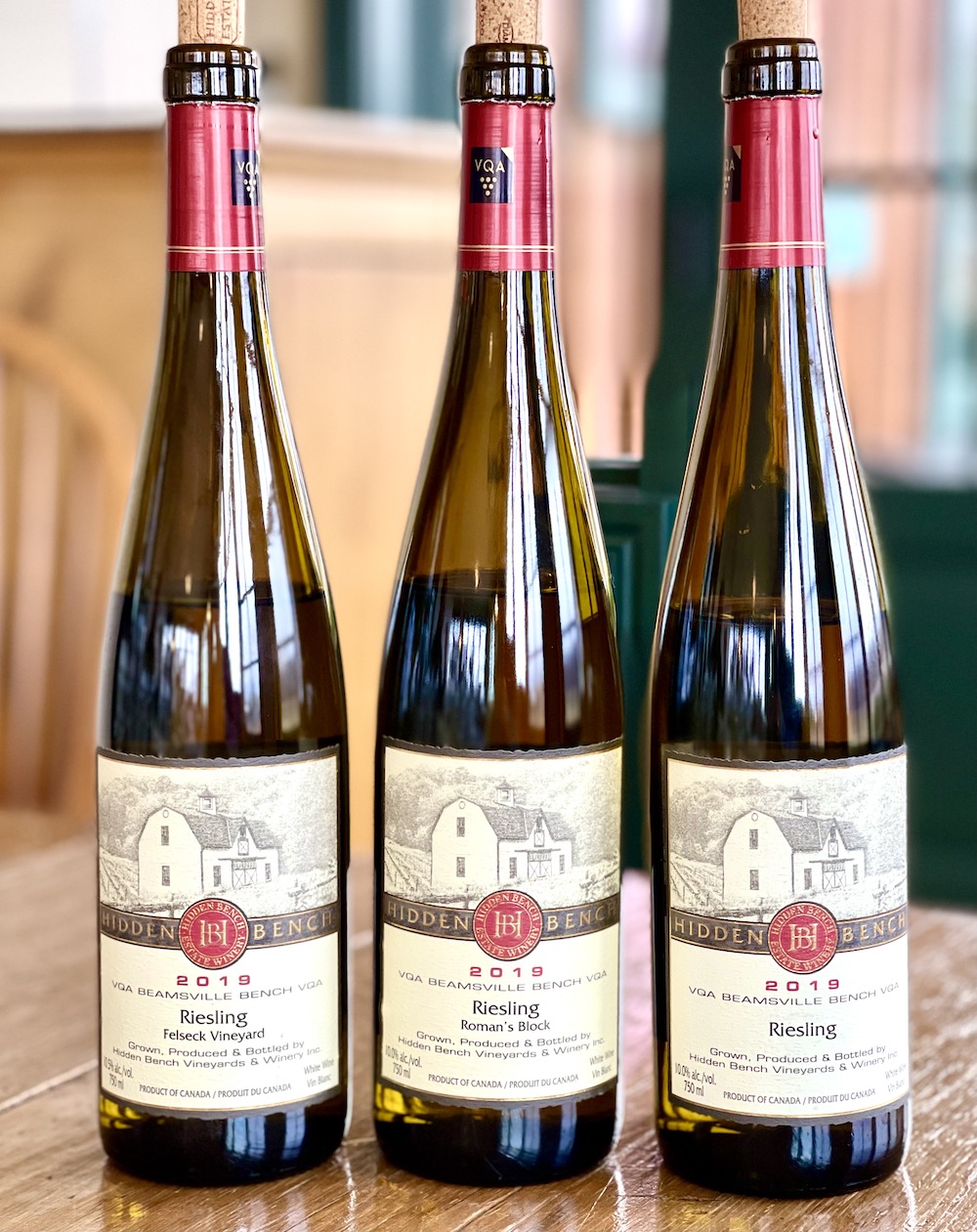
Hidden Bench Roman’s Block Rosomel Vineyard Riesling 2019 ($34, June release, 94 points) — If single-vineyard Beamsville Bench Rieslings are your jam (and they should be), you might want to stock up on the 2019 and 2020 vintages. No single-vineyard Rieslings are being made from the 2021 vintage, Thiel says, as the harvest wasn’t kind to this variety. The estate wine, however, will benefit from the de-classified top grapes. The vines in the famed Rosomel Vineyard are nearly 50 years old, and the older vines only yield about 2.5 tonnes/acre. The grapes are handpicked, sorted, and pressed as whole bunches. It has a delicate, elegant nose of honeysuckle, grapefruit, lime, and prevailing chalky/stony notes. It’s a touch shy at the moment, but it opens up to show a richer profile on the palate with ripe apple, gushing grapefruit and lime, stony minerality and a racy spine of acidity driving the backend and balancing modest sweetness on the long, lingering finish. You will be rewarded with 5+ years of cellaring.
Hidden Bench Felseck Vineyard Riesling 2019 ($30, June release, 93 points) — The grapes for this single-vineyard Riesling are sourced from a small one-acre parcel on the southern-most point of the vineyard, planted in 1999. It has a lovely floral/mineral nose with fresh apple, lemon, lime wedge and oyster shells. This is loaded with vivid minerality notes followed by bright citrus, green apple, nectarine, and a subtle savoury note that all lead to a sizzling, refreshing finish where the acidity rounds out the 18.9 g/l of RS. This will benefit from some cellaring, say 4+ years.
Hidden Bench Estate Riesling 2019 ($25, Vintages now and winery, previously reviewed, 92 points) —The estate version of this Riesling is a blend of the three Hidden Bench vineyards — Locust Lane, Felseck and Rosomel. This is a pure and fresh Riesling with a floral nose that displays honeysuckle, lime, grapefruit, apple skin, stony minerality and saline freshness. There is sweet-tart tension on the palate with gushing lemon, green apple, pear and stony minerality in a focused and racy style that all leads to a bright, lifted finish. Can cellar 5+ years.
The Chardonnays
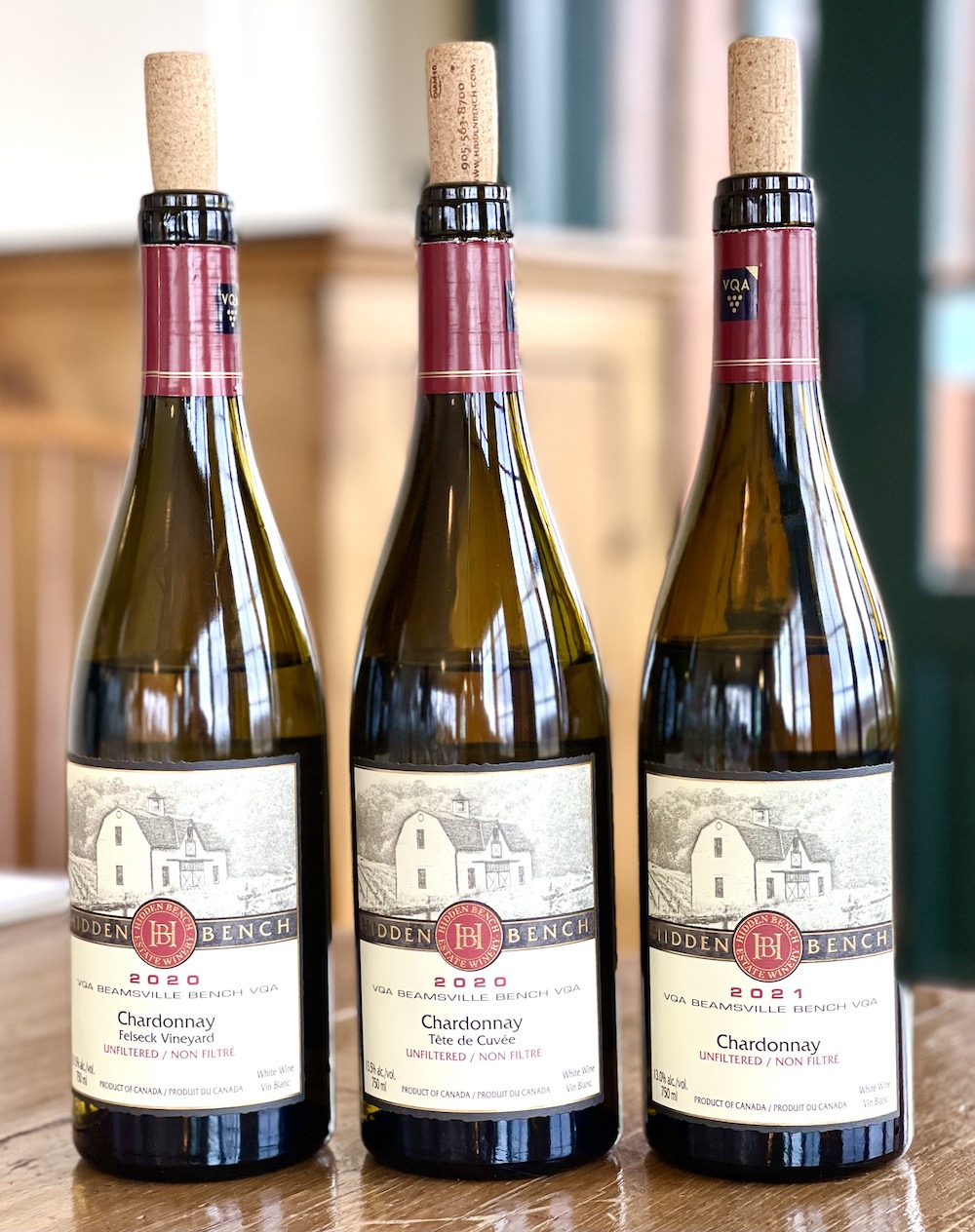
Hidden Bench Téte de Cuvée Chardonnay 2020 ($52, September release, 95 points) — The Téte de Cuvée is a barrel selection from the three estate vineyards that showcase the Beamsville Bench terroir. As it turns out, the 2020 vintage is all sourced from the Rosomel Vineyard, planted in 1976. The oak regime is 100% French with 17% new, 33% second fill, 17% third fill and the balance neutral wood for 16 months. The wine is bottled unfiltered and unfined. This is always among the top Chardonnays made in Ontario in any given vintage, and I love what Baines has done with this grand cru vineyard fruit in 2020. It has such a profound and enticing nose of yellow apples, lemon curd, flinty minerality, poached pear and toasty/nutty oak spice notes. It’s rich and vibrant on the palate with generous baked pear and apple tart, a creamy texture, flinty/stony minerality, and lemon preserves with a long, luxurious finish that benefits from racy acidity. A beautiful Chardonnay that will reward with 6+ years in the cellar.
Hidden Bench Felseck Vineyard Chardonnay 2020 ($48, September release, 94 points) — The oak regime for the Felseck Chard is 100% French with 19% new oak, 18% second fill, 18% third fill and the balance neutral for 16 months. The wine is bottled unfiltered and unfined. This is a bit shy on the nose now, but swirl vigorously and it opens up to rich stone fruits, citrus accents, wet stone minerality and elegant oak spice notes. It’s more overt on the palate with rich and generous pear/apple fruit, lemon tart, subtle flinty/stony notes, a creamy texture with length and verve through a long, lifted finish. Can cellar 5+ year.
Hidden Bench Estate Chardonnay 2021 ($32, May/June release, 92 points) — The Estate Chardonnay is blend of Locust Lane, Felseck and Rosomel vineyards aged in large format French oak (25% new oak) and a small portion aged in concrete. The nose shows fresh pear and quince, yellow apple, grapefruit/lemon zest and integrated oak spices. It’s generous and rich on the palate with a creamy texture, flinty/mineral notes, apple, pear and lemon freshness all delivered on a finessed and lifted finish.
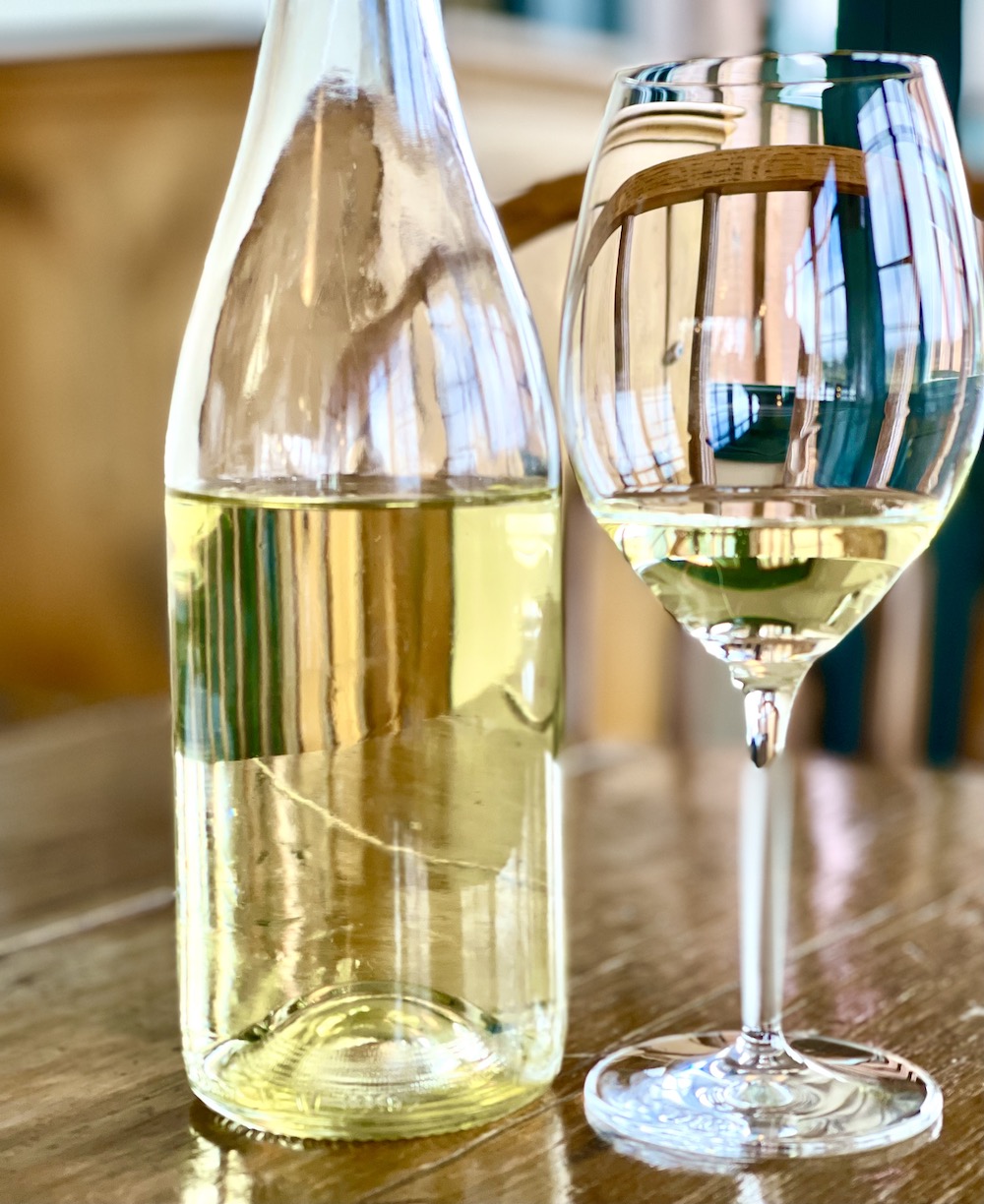
Hidden Bench Chardonnay Béton 2021 ($28, likely released in June, 92 points) — This is the newest wine to appear in the Béton series of wines aged in the new concrete tanks at Hidden Bench. The wine was envisioned after a trip visiting eight organic Chardonnay producers in Chablis a few years ago. “After visiting there,” Thiel explains, “our goal was to make a Chablis style wine.” Thiel said one of the key elements for the distinct Chablis style is that “they spend a lot of time on the lees.” Generally, that means 16-20 months on lees and then concrete aging, “which added a textural component. This was part of the plan with the concrete tanks. This is where we wanted to be.” This first Béton Chard spent 16 months on the lees with concrete fermentation and aging and no oak whatsoever. It is absolutely Chablis-esque, with a creamy pear nose, elevated flinty minerality, lemon tart and nutty notes. There are lovely flint and saline notes on the palate with a creamy texture, pear, yellow apple, and a lemon kick on a finessed finish. A soulful rendition on unoaked Chardonnay. Wine was tasted from an unlabelled bottle.
The rest of the white wines
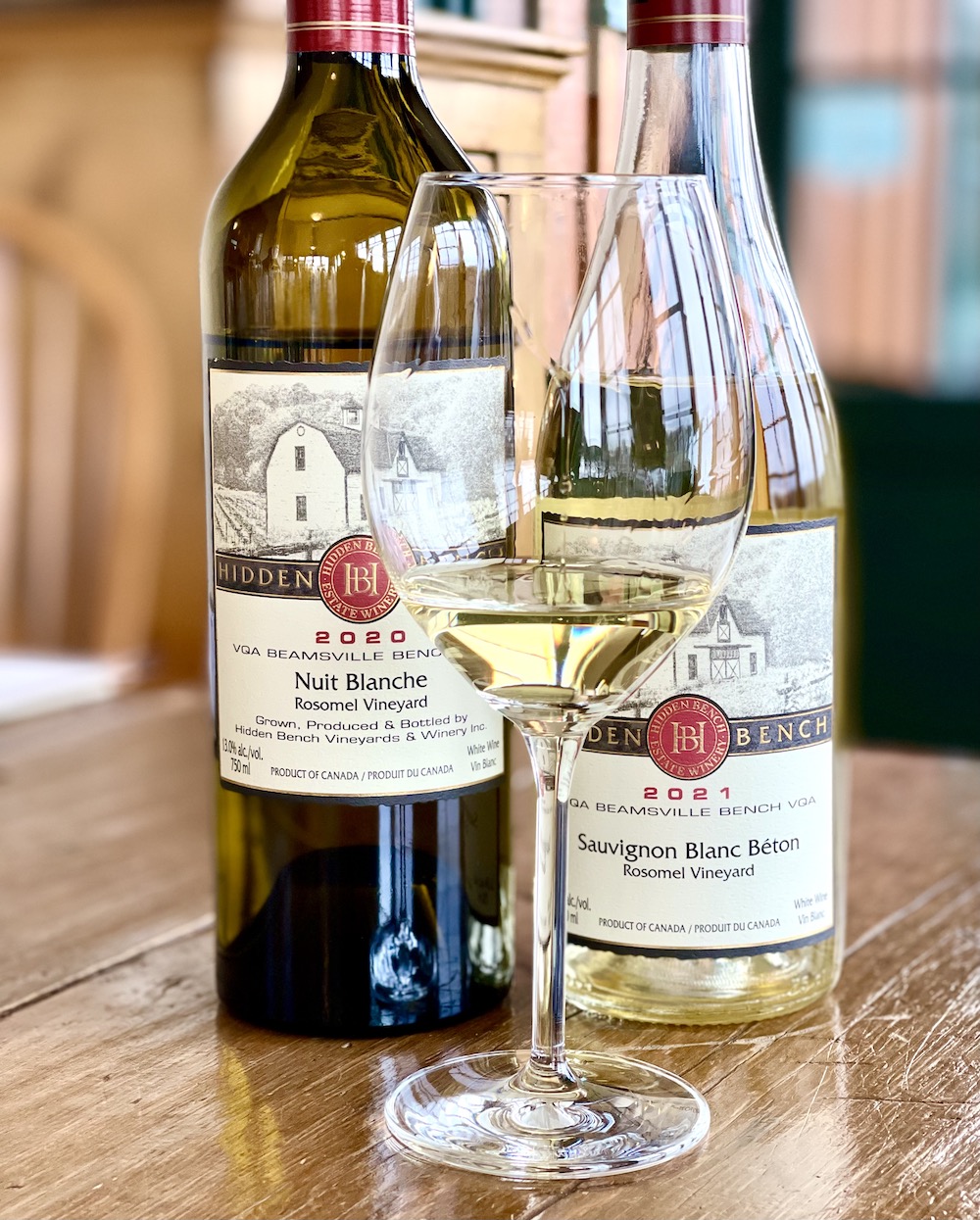
Hidden Bench Nuit Blanche Rosomel Vineyard 2020 ($42, winery now, 93 points) — The blend for the 2020 Nuit Blanche is 80% Sauvignon Blanc and 20% Semillon and it’s aged in mostly older French oak for six months. Thiel calls this wine “hedonistic,” and he’s not wrong. It has a profound nose of passionfruit, grapefruit, kiwi, fresh herbs, toasted almonds, and elegant spice notes. There is beautiful freshness and verve on the palate giving this intriguing wine a sense of elegance. The fruits light up the palate with juicy grapefruit, kiwi, nectarine, mulled herbs, flinty minerality and integrated spice notes with everything held in balance from the racy acidity driving the back end. Might want to give it a little time in the cellar to see how it evolves but tasting pretty fine right now.
Hidden Bench Sauvignon Blanc Béton Rosomel Vineyard 2021 ($28, winery now, 93 points) — We retasted this interesting take on Sauvignon Blanc, the first wine that was aged in the estate’s new concrete tanks and a chance to taste a wood-aged Sauvignon Blanc beside a concrete version. Aging in concrete was for seven months. An interesting and different nose of grapefruit, pear, some tropical notes, grass, and herbs with flinty minerality. It has gorgeous texture and a rich, deep feel on the palate with ripe pear, grapefruit, subtle spice notes, lime zest and a long, fresh finish. Love it, and even more with a year of aging.
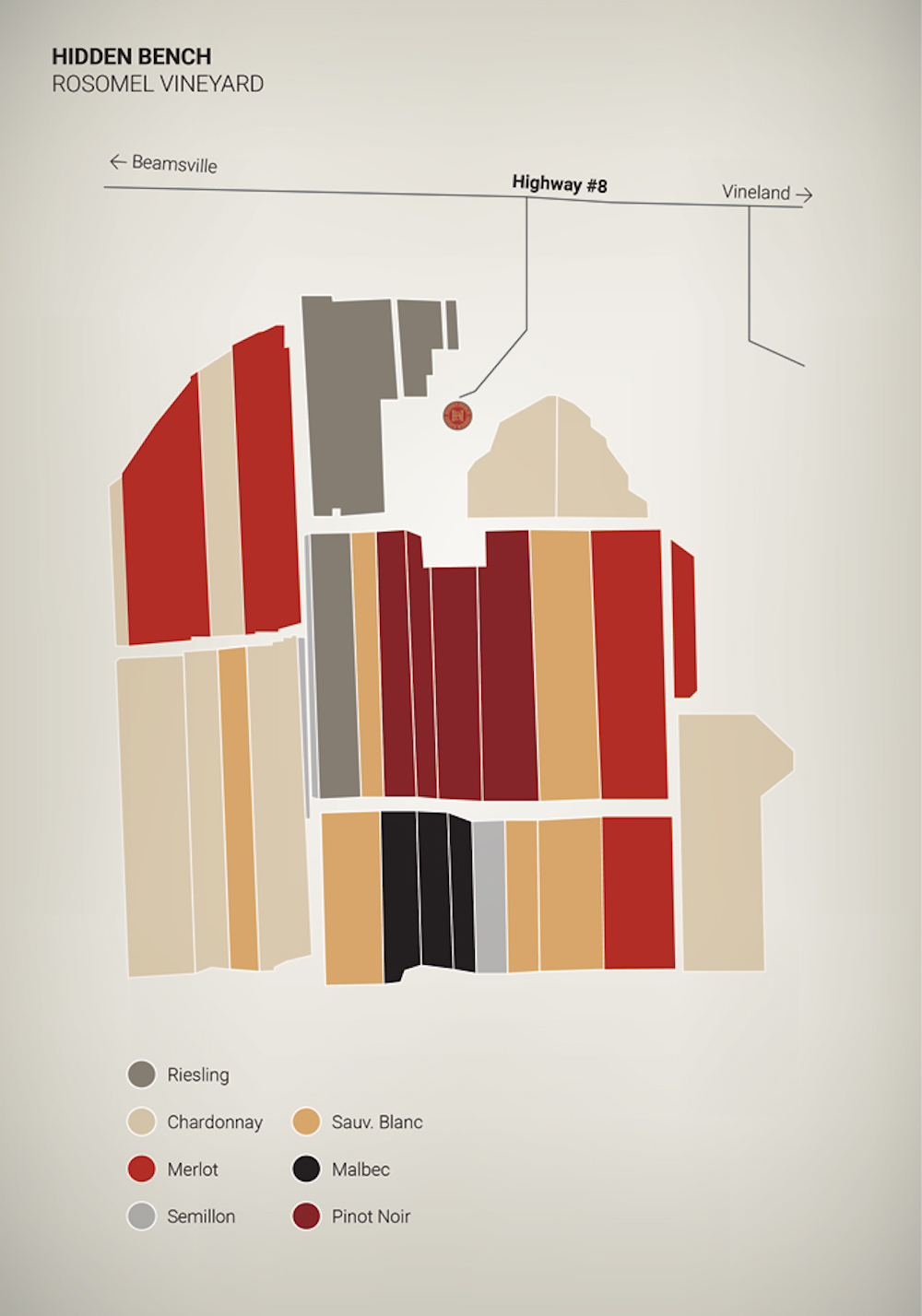
Hidden Bench Fumé Blanc Rosomel Vineyard 2020 ($32, winery now, 92 points) — This single-vineyard Sauvignon Blanc is aged in 100% French oak (11% new). It has an interesting nose of grapefruit, gooseberries, fresh herbs, star fruit and lovely integrated spice. It’s not labelled yet. It’s more concentrated on the palate with a creamy texture in support of the grapefruit, pear, bergamot, herbs, flinty minerality and spice with a solid acid backbone and fresh finish.
The rosé
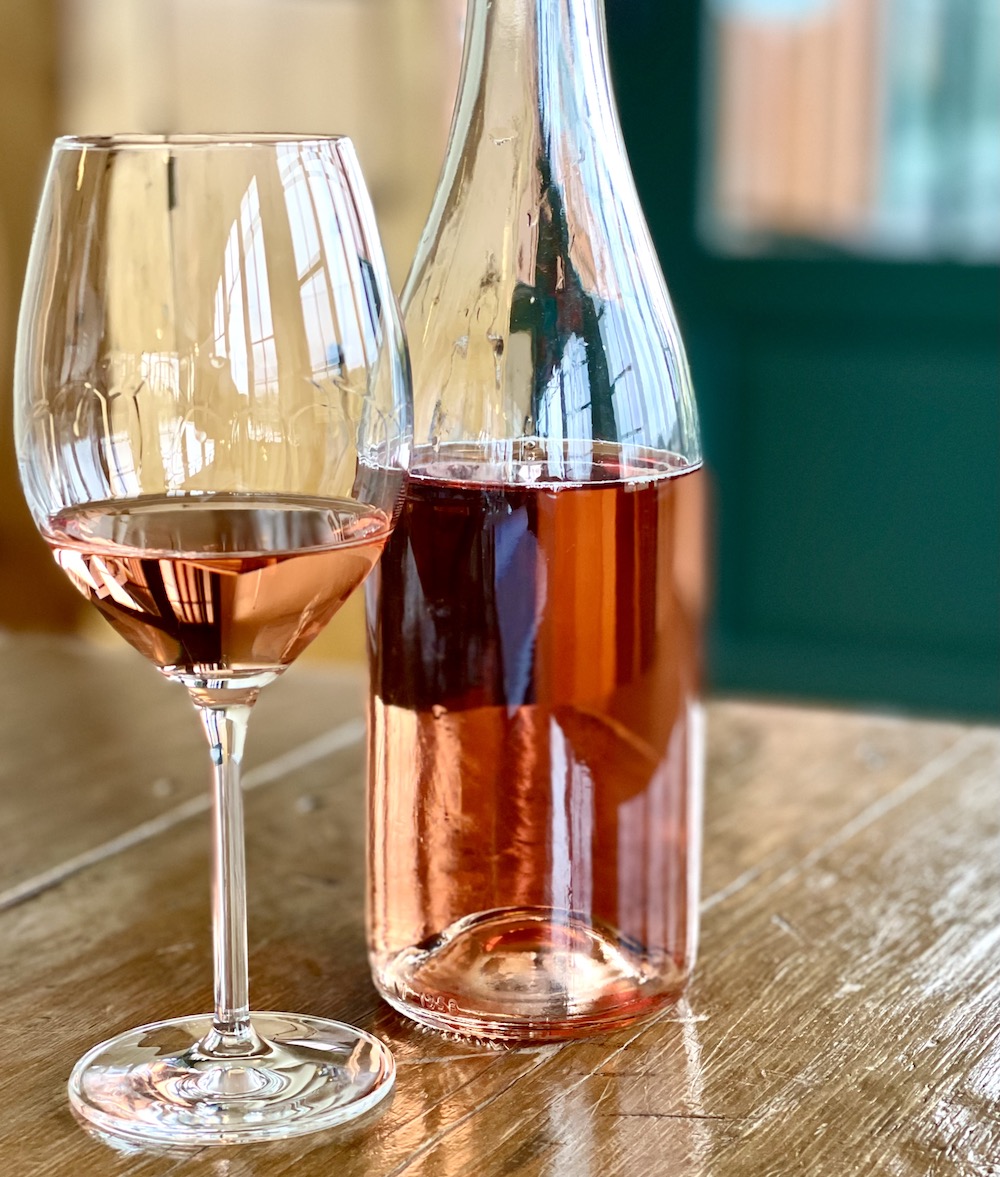
Hidden Bench Locust Lane Vineyard Rosé 2022 ($25, June release at Vintages, 92 points) — The single-vineyard Locust Lane Rosé, one of three made at Hidden Bench, is a blend of 94% Pinot Noir and the rest Viognier. The wine was unlabelled at the time of tasting. It’s fresh on the nose with brambly red berries, herbs, and a touch of lemon zest. It has lovely texture in a dry and vibrant style, with tangy raspberries, cherries, subtle earthy/savoury notes, and a perky, lively finish bolstered by mouth-watering acidity.
The Pinot Noirs
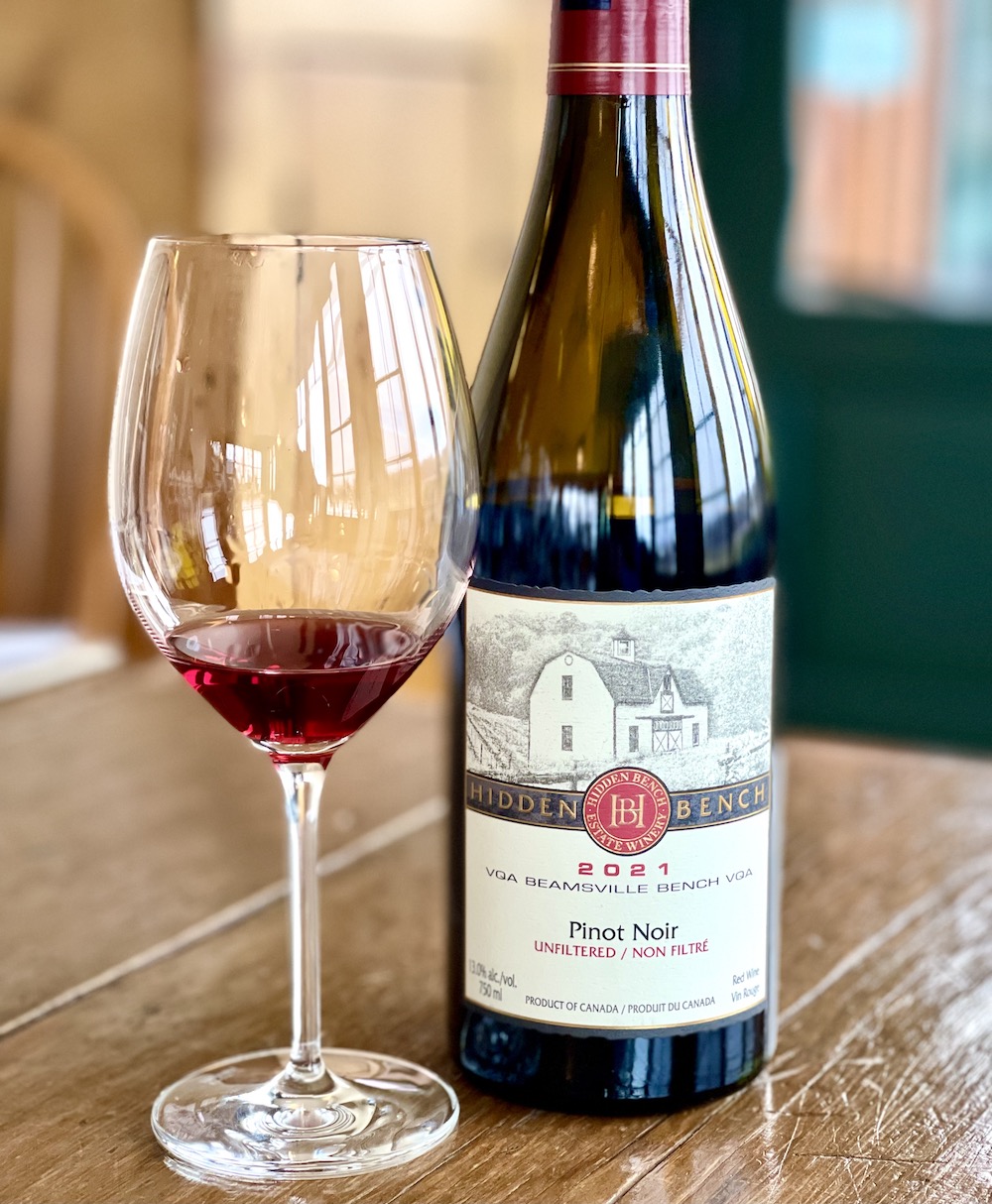
Hidden Bench Estate Pinot Noir 2021 ($38, winery now, Vintages Essential, 93 points) — The Estate Pinot is a blend of all three vineyards that sees 89% French oak aging (only 22% new oak) with the rest aged in concrete, all for 10 months. For an estate Pinot, this represents incredible value. It has a lovely, complex nose of brambly red berries, plums, forest floor, pretty violets, and savoury oak spice notes. It’s juicy and layered on the palate with wild black raspberries, dark cherries, earthy/savoury notes, medium+ tannic structure, dried herbs, and a vibrant, long finish. Can cellar 5+ year.
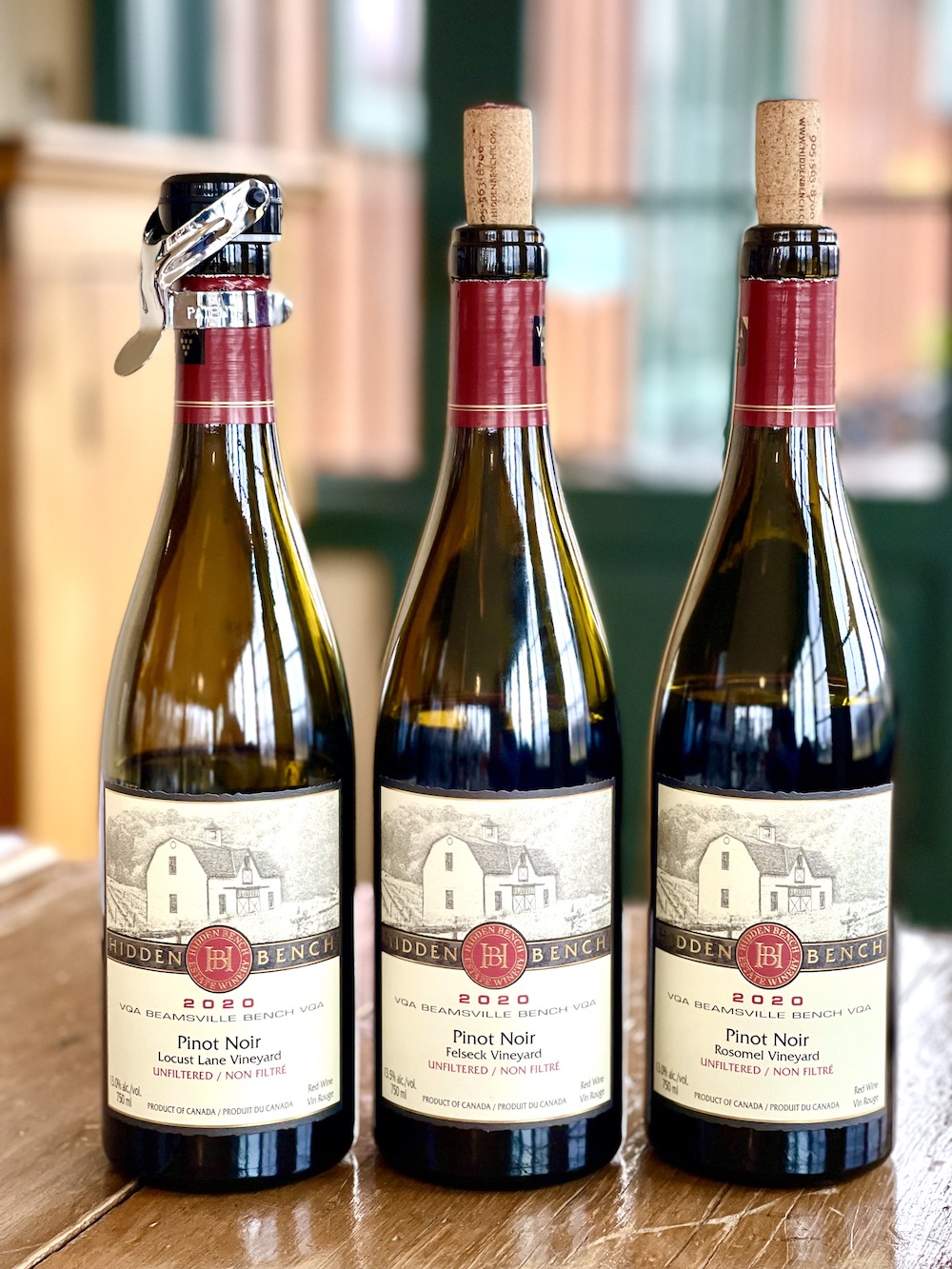
Hidden Bench Rosomel Vineyard Pinot Noir 2020 ($58, June release, 94 points) — The oak regime is in 100% mostly used French oak barrels for 10 months. It’s bottled unfined and unfiltered. These three single-vineyard expressions from 2020 vintage are the most concentrated Pinots the estate has produced. The Rosomel has an overt nose of dark cherries, black raspberries, underlying floral/violet notes, a touch of herbs and fine oak spice. The palate is supported by fine tannic structure in support of a melange of red berries, anise, herbs, and elegant oak spice with plenty of acid zip to keep it ticking on a long, lifted finish. Can cellar 7+ years.
Hidden Bench Felseck Vineyard Pinot Noir 2020 ($48, June release, 92 points) — Made essentially as the Rosomel above, the Felseck has a more earthy nose with underlying savoury red berries, cassis, forest floor, red currants, and enticing spice notes. It’s more robust and structured on the palate with a melange of ripe red berries, graphite, anise, and savoury spice notes with electric acidity driving the through a finessed finish. Can cellar 7+ years.
Hidden Bench Locust Lane Vineyard Pinot Noir 2020 ($48, September release, 94 points) — Again, similar oak regime as the Pinots above. The Locust Lane has a more herbaceous/floral nose than the other Pinots with fresher red berries, anise/licorice notes, crunchy pomegranate, and integrated spice notes. It’s a more muscular wine on the palate with grippy tannins, red cherries, brambly raspberries, anise, dried herbs, fine oak spices and a fresh, finessed finish. Can cellar 7+ years for further development.
The rest of the red wines
Hidden Bench PTG 2021 ($32, June release, 92 points) — There is always something new going on at Hidden Bench. This was a pleasant surprise, a passe tout grains (PTG) style of wine that is a fresh and lively red blend made from Pinot Noir (two thirds, unoaked) and Gamay Noir (one-third with some oak) sourced from the new Gamay vineyard Hidden Bench leases and farms organically from the Lincoln-Lakeshore sub-appellation. Tasted without the label. “We think it has a lot of potential,” says Thiel. “People are gravitating, especially young people, to lighter wines.” It has a fresh and lively nose of meaty red berries, plums, red currants, and subtle spice notes. It’s juicy on the palate with racy acidity lifting the fresh red berries, plums, and integrated spice notes. This is drinking great right out of the gate. You can age two or three years, but not necessary.
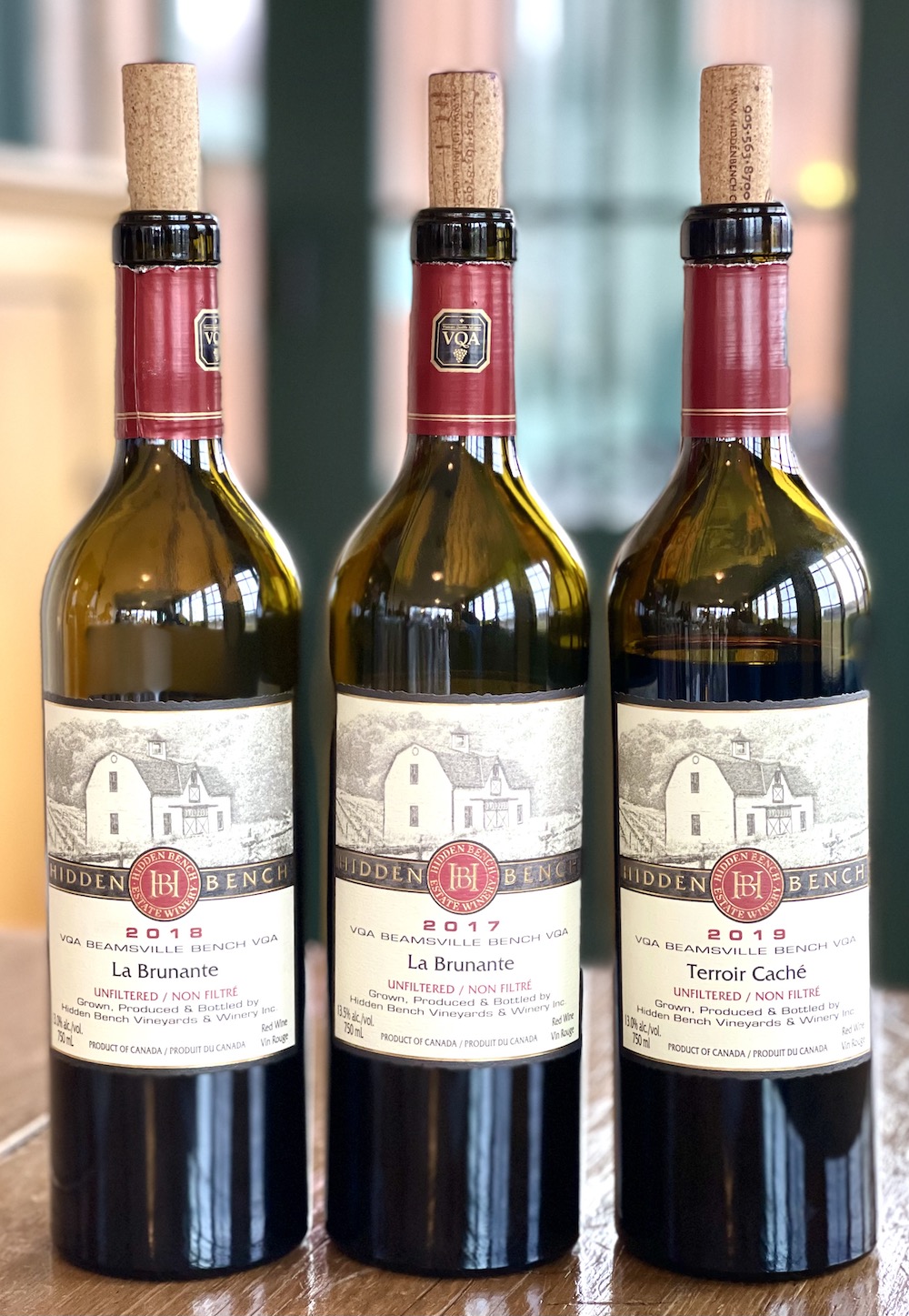
Hidden Bench Terroir Caché 2019 ($45, winery now, 93 points) — The Terroir Caché is made every vintage at Hidden Bench as a Bordeaux-varietal red blend that is the little sister wine for the top La Brunante made only in vintages the estate feels makes the cut. It’s a blend of all three vineyards — Rosomel, Locust Lane and Felseck Vineyards — consisting of 50% Merlot, 34% Cabernet Franc and 16% Malbec. It’s aged in 100% French oak (31% new) and the rest in older barrels for 20 months. It has an attractive nose of dark berries, brambly raspberries, dark cherries, plums, anise/licorice, leathery notes, dark chocolate, and fine oak spice accents. It’s generous and smooth on the palate with a heady broth of red and dark berries, anise, cedar, rich spices and a juicy, lifted finish.
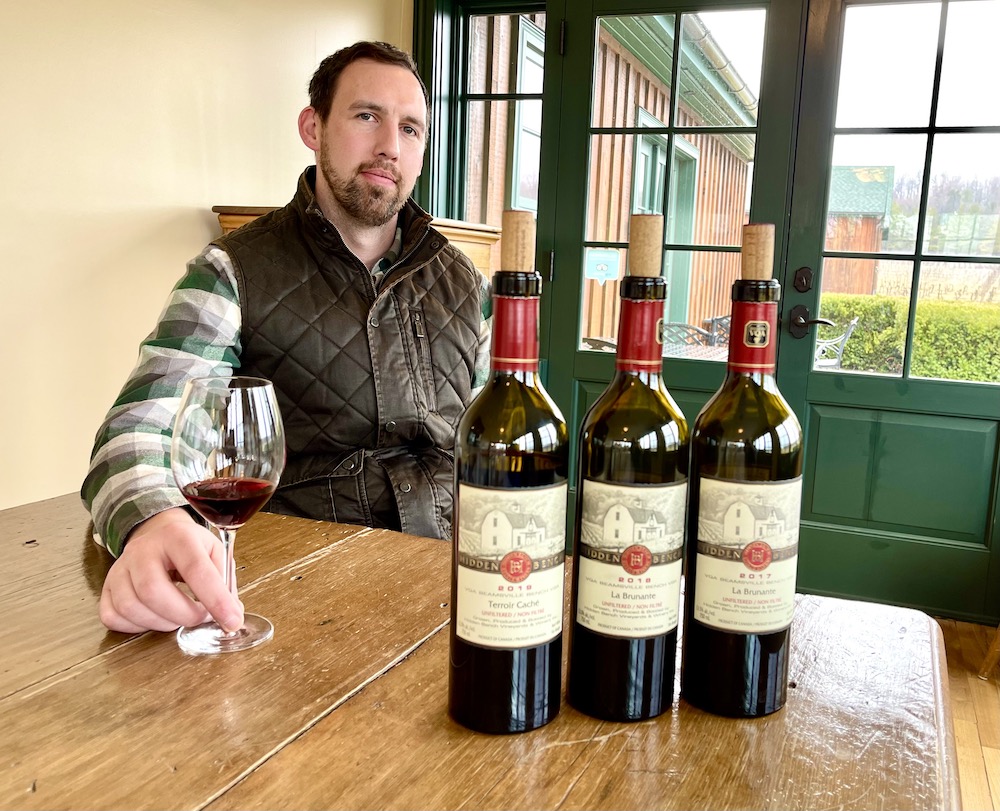
Hidden Bench La Brunante 2017 ($85, winery now, 94 points) — This signature red meritage is only produced in years when the estate believes that optimal vintage conditions have resulted in exceptional wine. It’s a blend of 53% Merlot, 35% Cabernet Franc and 17% Malbec with barrel aging in a combination of new and used French oak for 20 months and bottled unfiltered and unfined. Such an elegantly scented nose of perfumed black currants, crème de cassis, kirsch/black cherries, cedar/leather notes, rousing spice notes and fresh turned soil. It has beautiful texture and complexity on the palate with ripe, dense dark berries, anise, juicy plums, concentrated cassis, ripe tannins that add structure and profoundly elegant spice notes all leading to long, persistent, and lifted finish. A wine that will reward with a decade or more in the cellar.
Hidden Bench La Brunante 2018 ($85, September release, 95 points) — the 2018 version of this top blend is 62% Merlot, 24% Cabernet Franc and 14% Malbec with barrel aging in a combination of new and used French oak for 20 months and bottled unfiltered and unfined. I scored this beauty slightly higher even though it’s extremely tight now and will benefit from the extra time in the bottle until the fall release. Upon vigorous swirling in the glass, it reveals its full potential in layers of cassis, black currants, blackberries and densely fruited black raspberries, cherries, and plums with subtle earthy/savoury notes and more overt spice notes. It’s a bigger wine than the 2017 with a mouthful of dark berries, concentrated cherries and raspberries, lovely texture, ripe tannic structure, a touch of fresh turned soil, fine oak spice and rousing acidity keeping it all in check through the long, long, echoing finish. I hesitate to offer a cellar window beyond a decade, but this certainly has the stuffing to improve beyond that.





Comment here